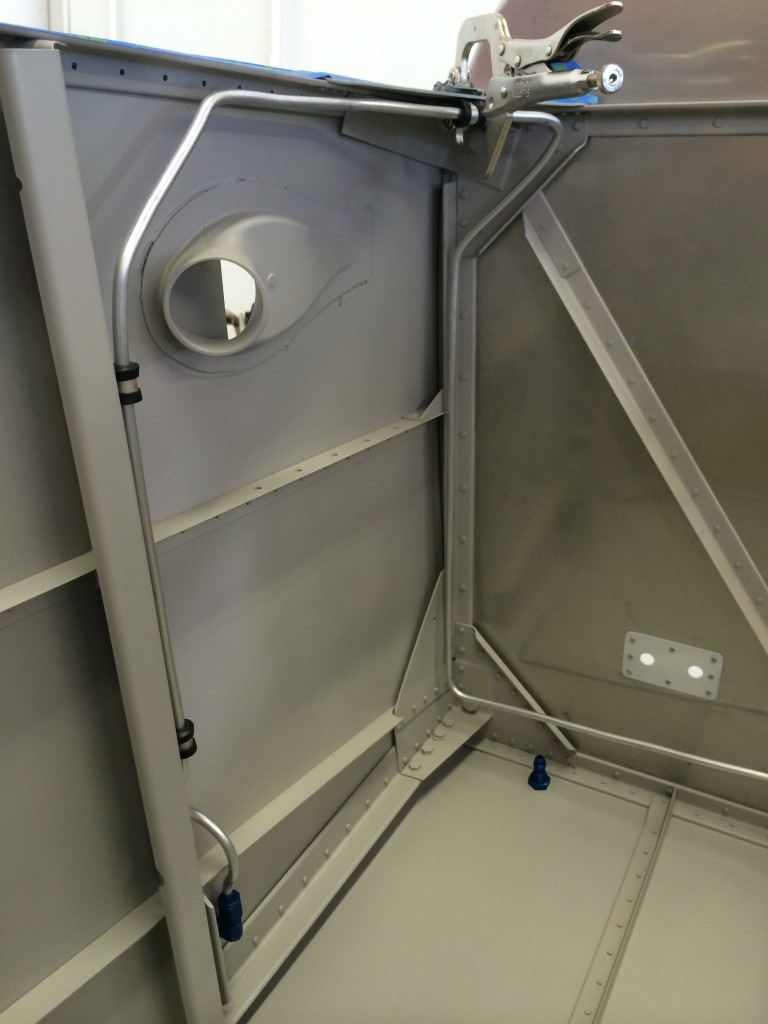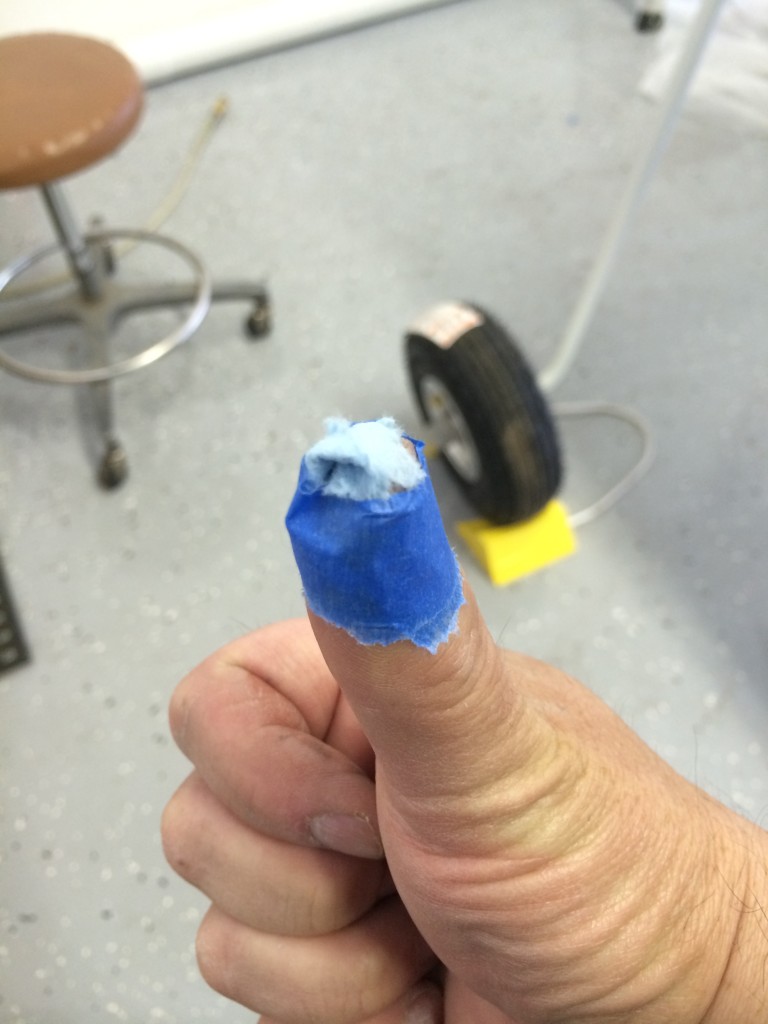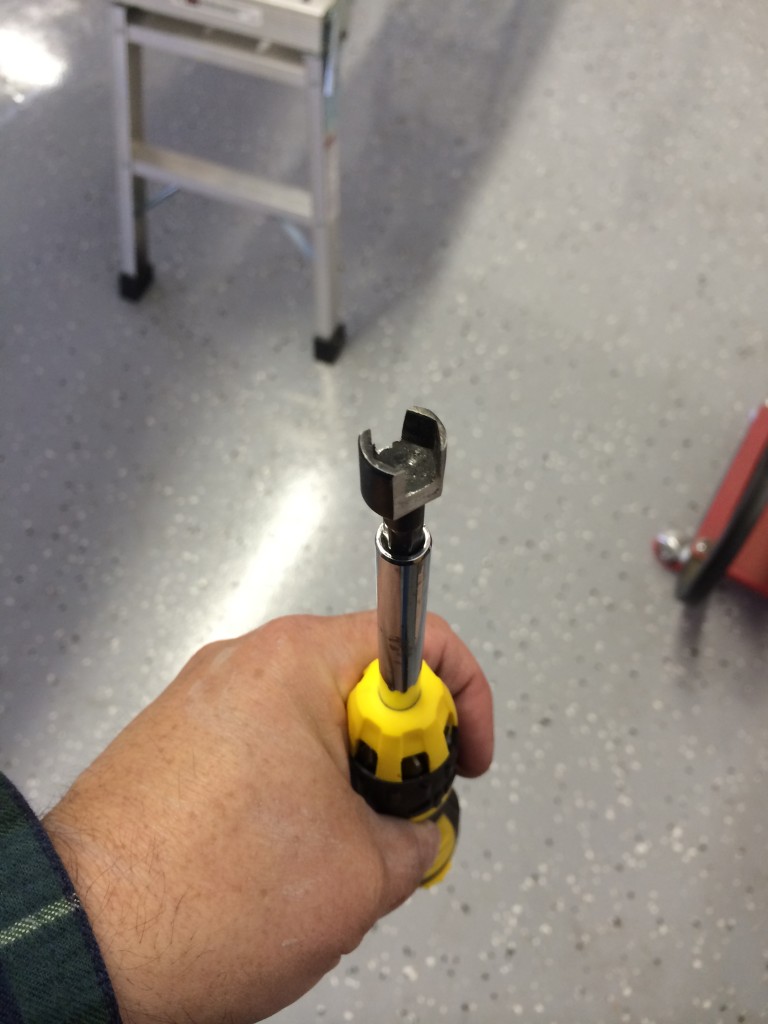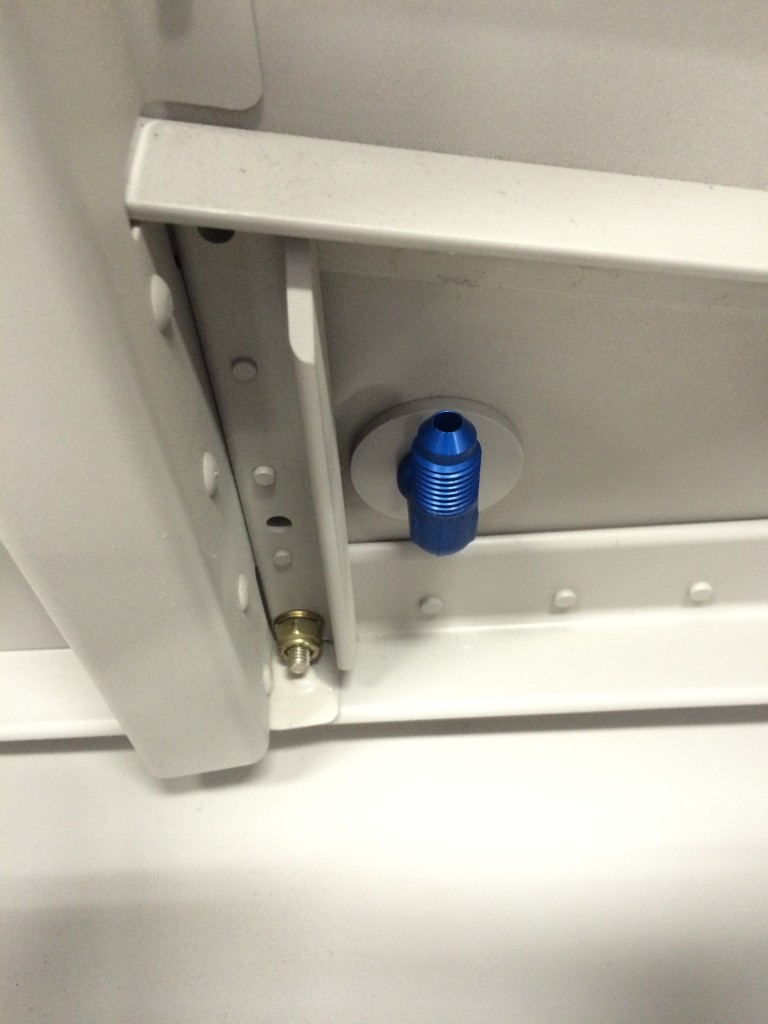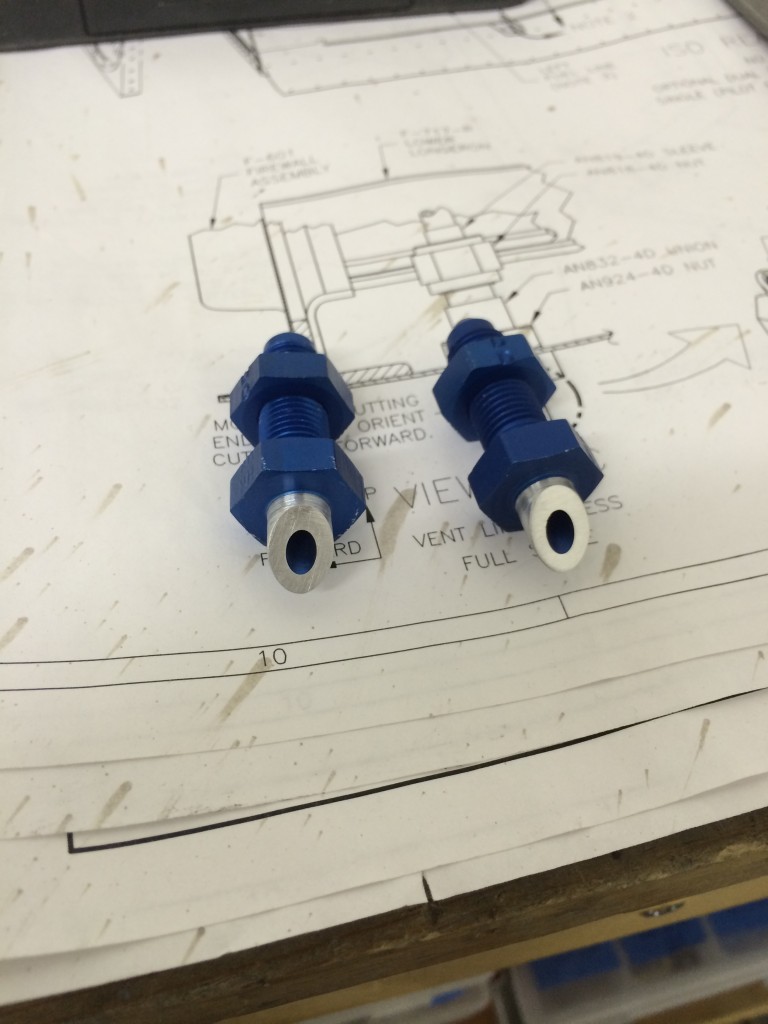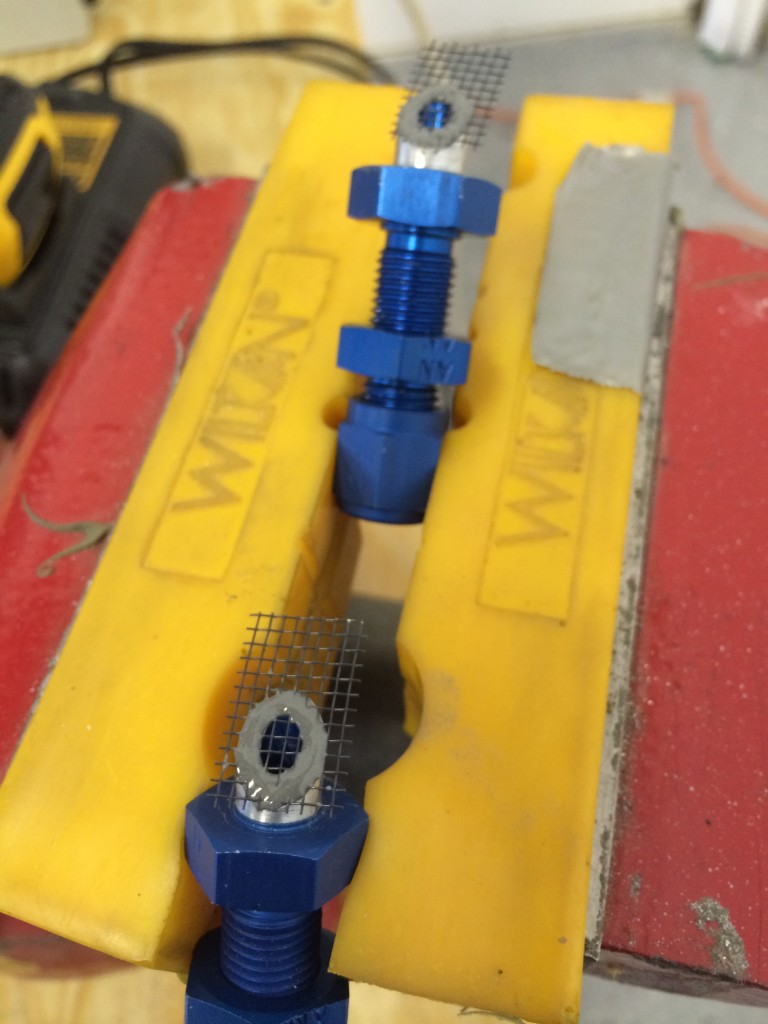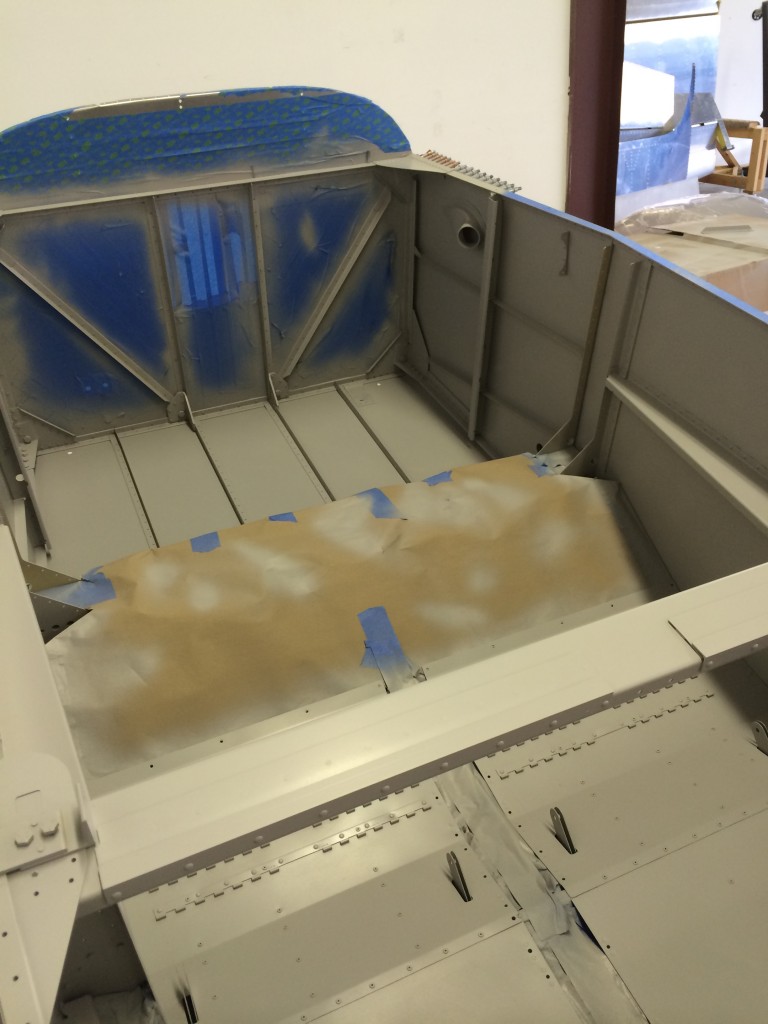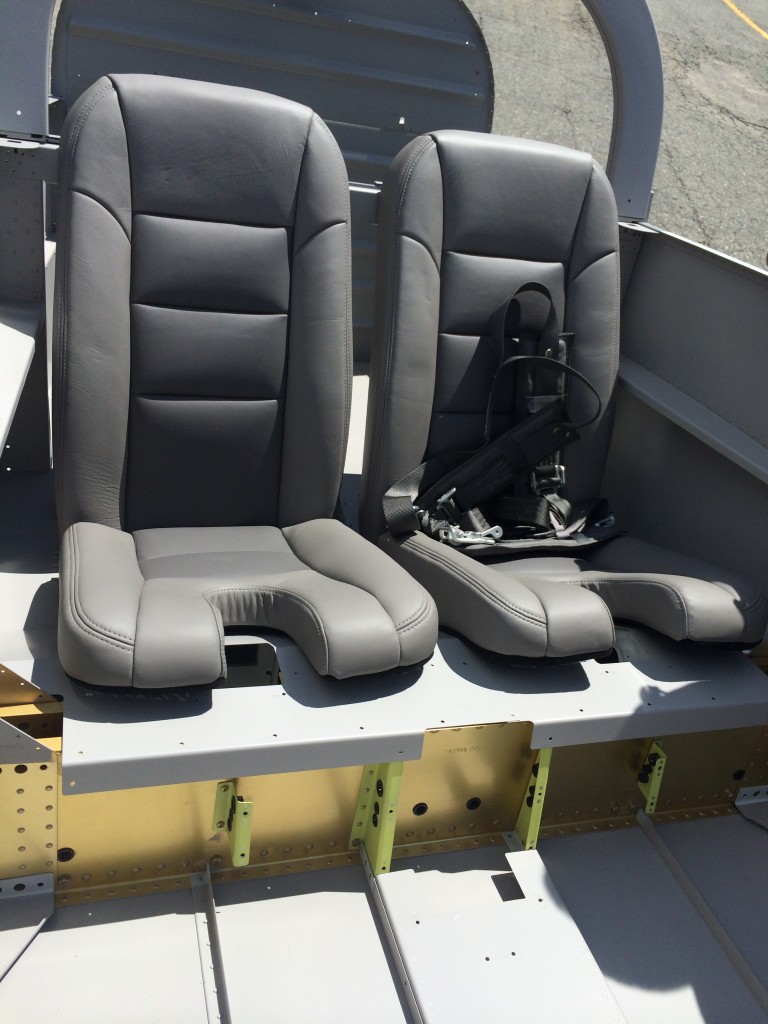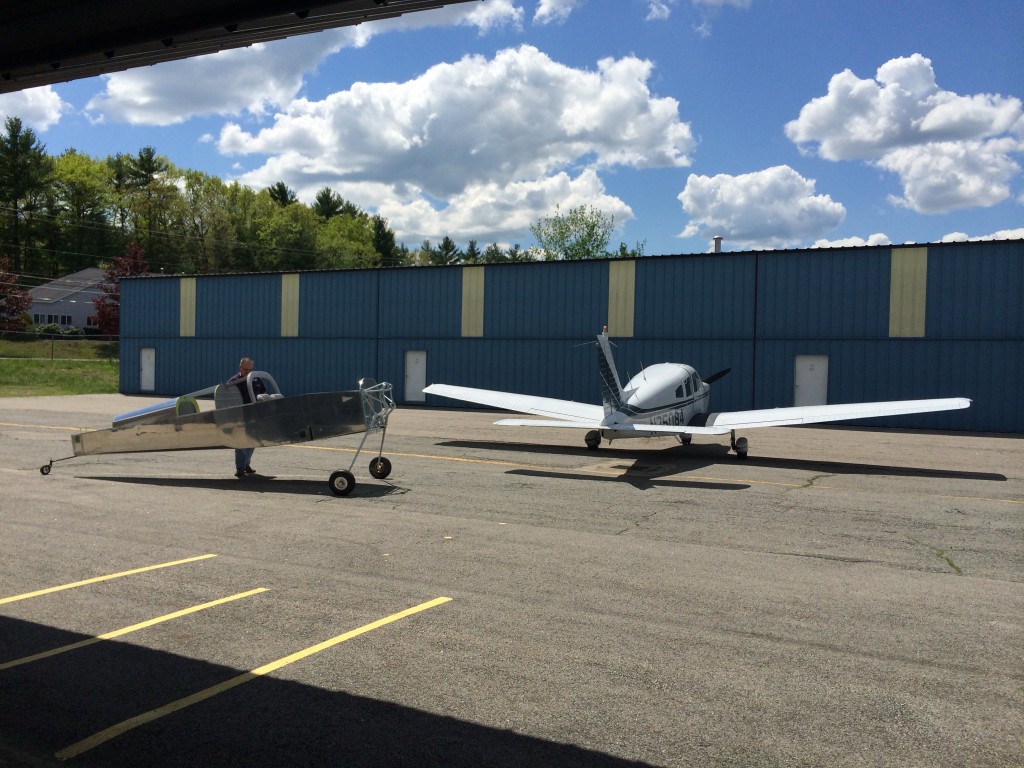One of the least enjoyable and most time-consuming parts of this project is bending fuel line tubing. With the fuse interior painted it’s time to install interior fuel vent and feed lines, and that means making a lot of tubing bends.
The fuel vent lines are (I hope) the hardest to form. They connect the vent fittings I fabricated a couple of days ago to their respective bulkhead fittings on each side of the fuselage, where an additional external line will connect with vent lines installed in each tank. They’re formed in a U-shape so that fuel won’t siphon out of the tanks. And it’s the U-shape that makes them hard to form.
I didn’t take any pictures of forming the complex bend at the lower left but it was a pain in the tuchas, and took three attempts to get it right. After that end of the tube was complete, it was a matter of figuring out where the next bend should be, making it, fitting it to the fuselage and making adjustments, then moving on to the next bend. It took a few hours, but the end result was good…
 And here it is, installed in the fuselage. The fittings still need to be torqued, but it’s in the fuselage to stay…
And here it is, installed in the fuselage. The fittings still need to be torqued, but it’s in the fuselage to stay…
I hope the right vent line won’t take so long…

